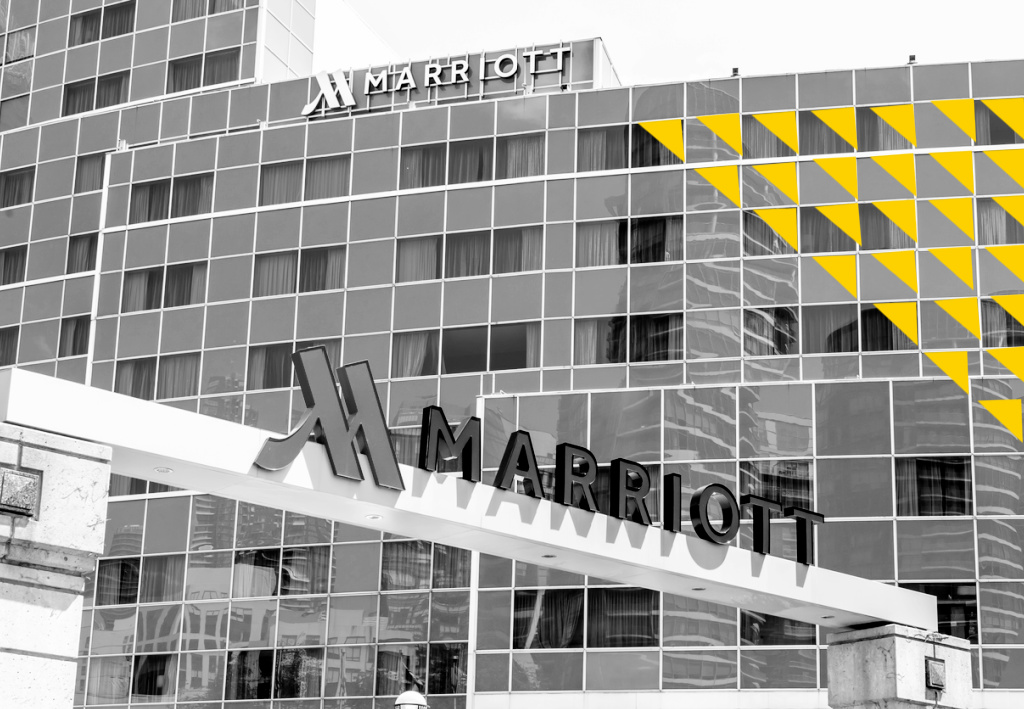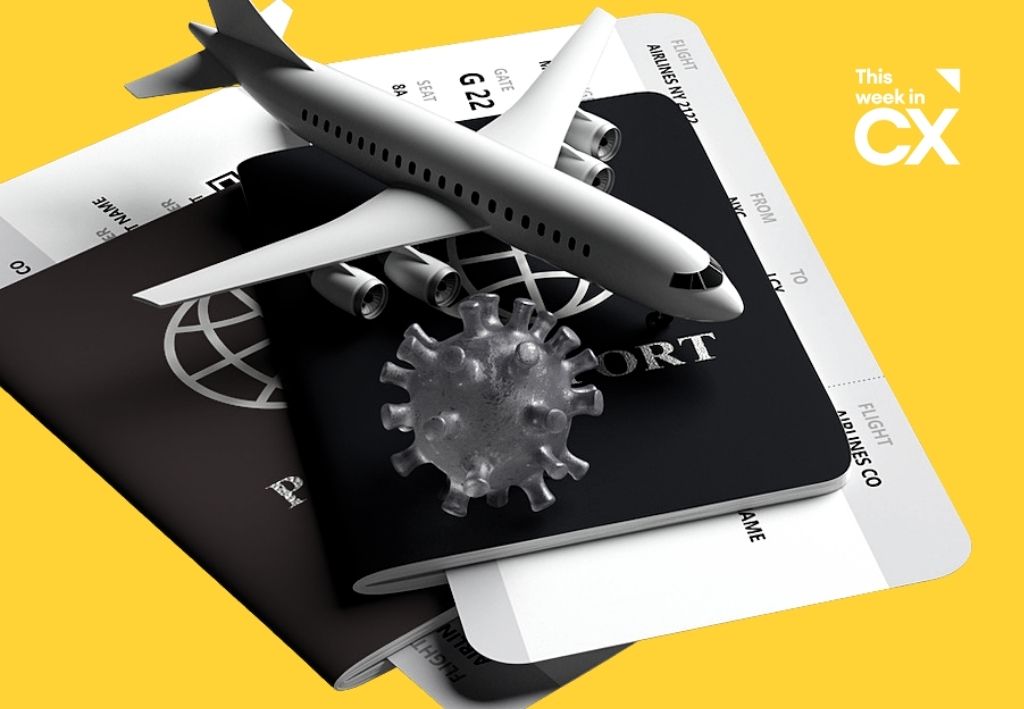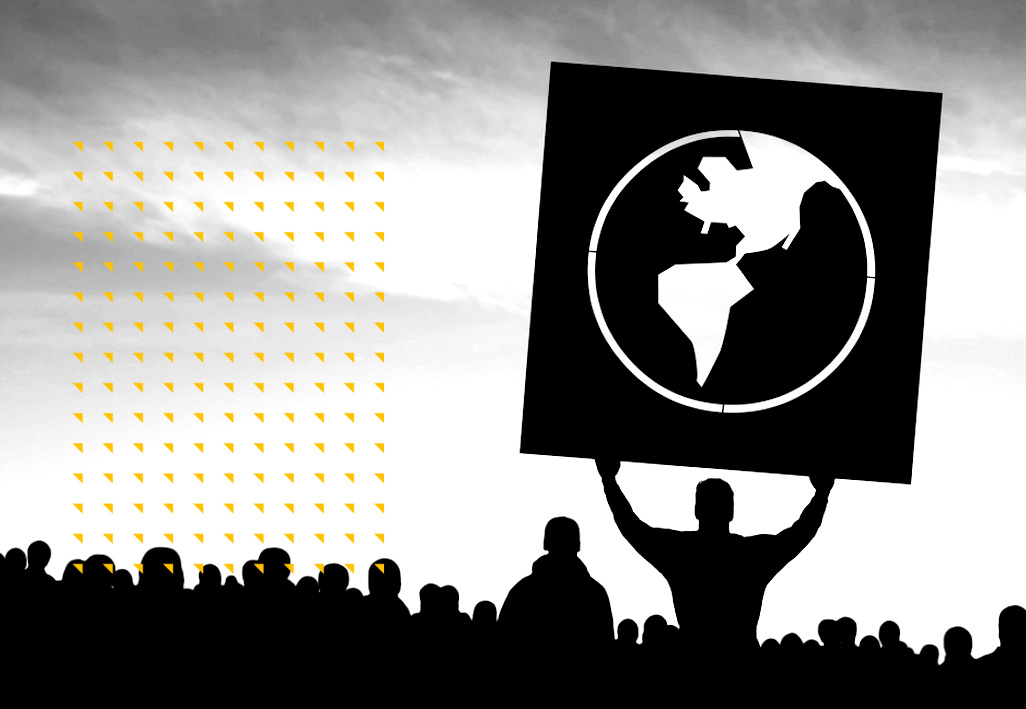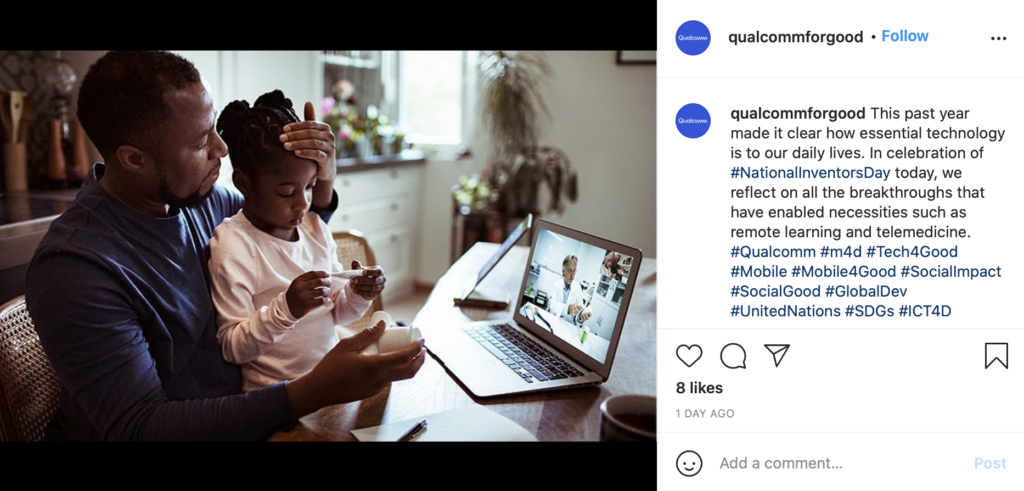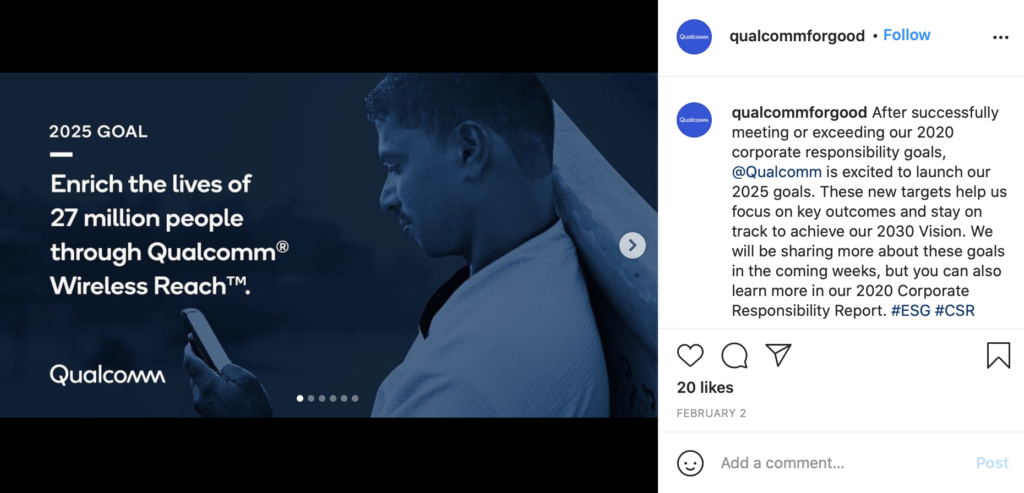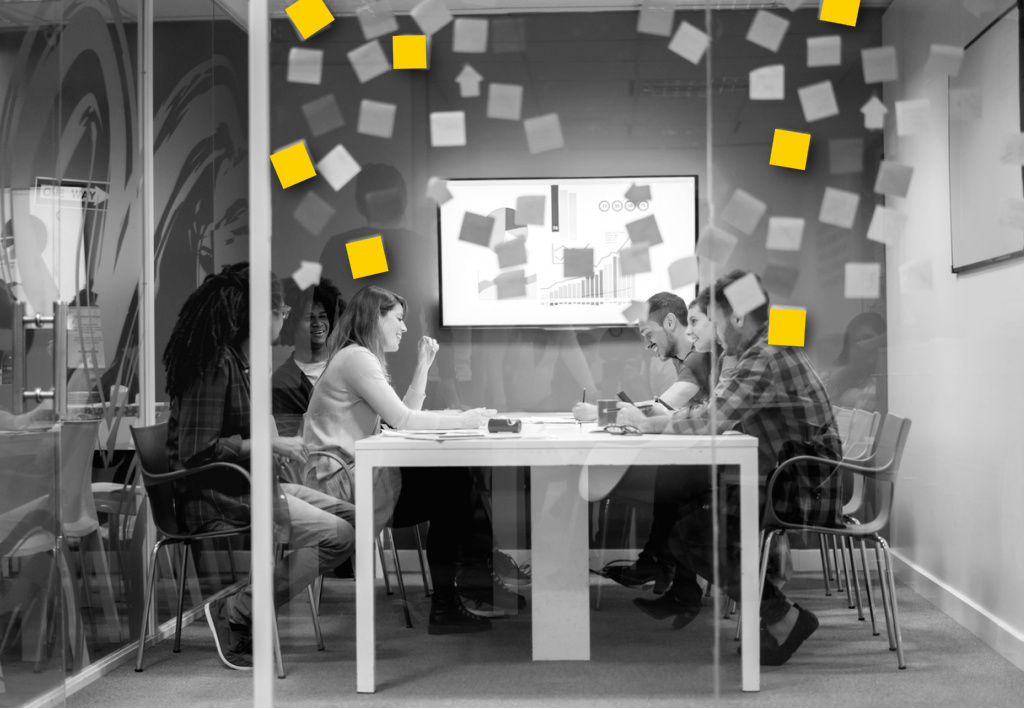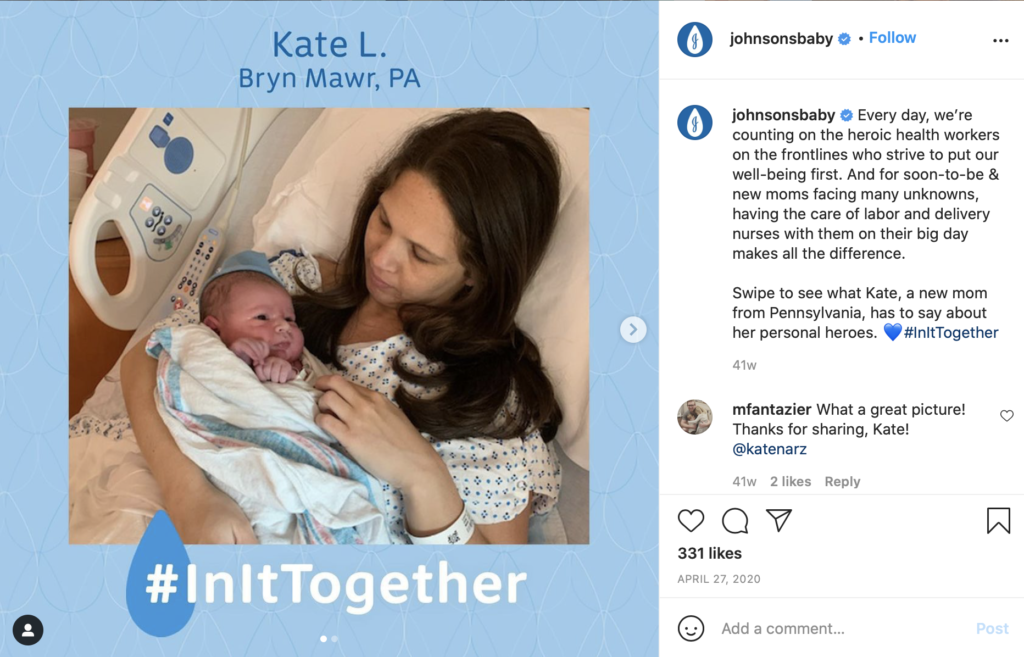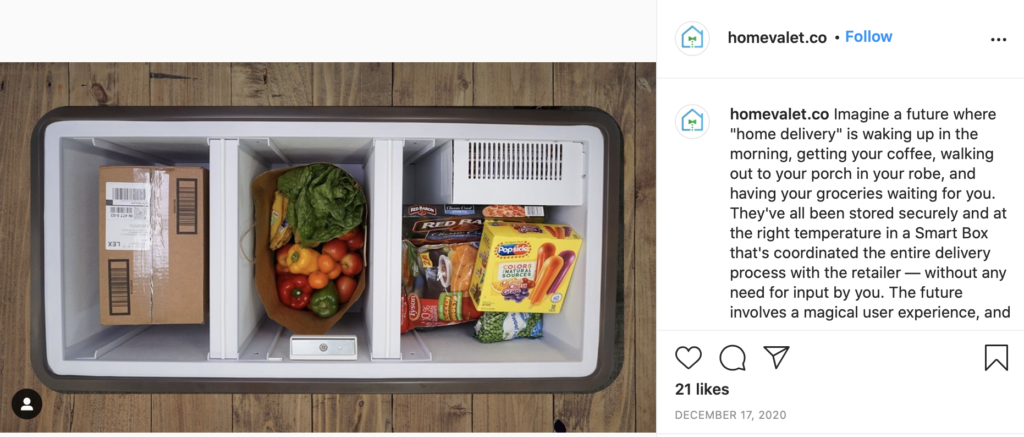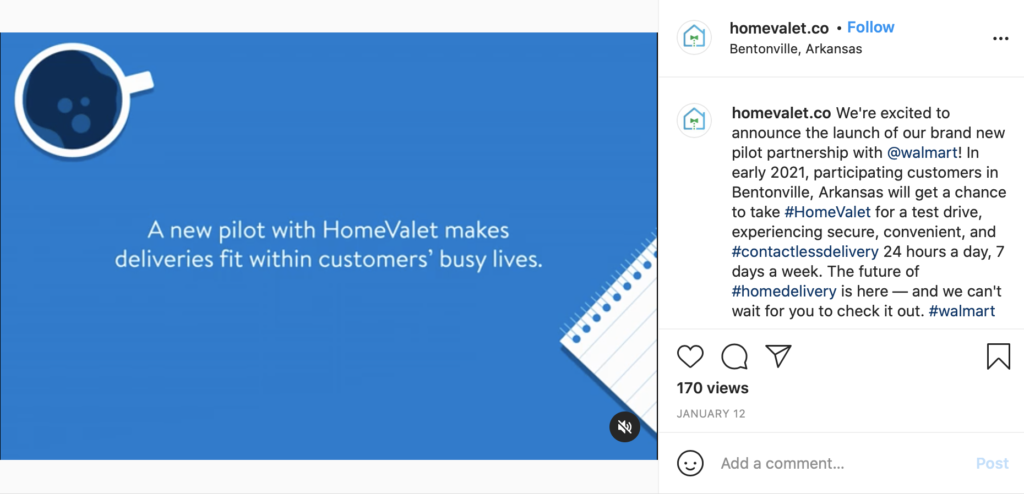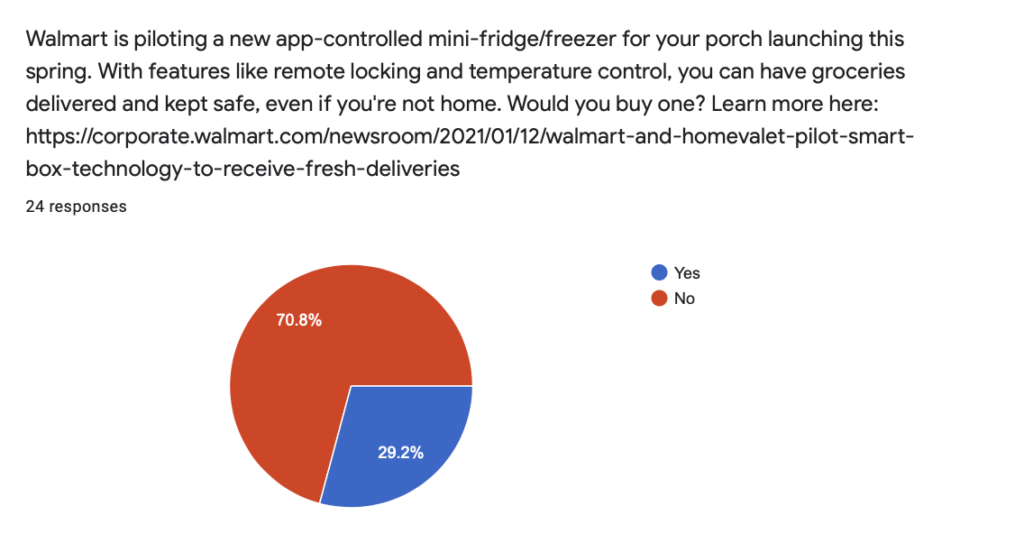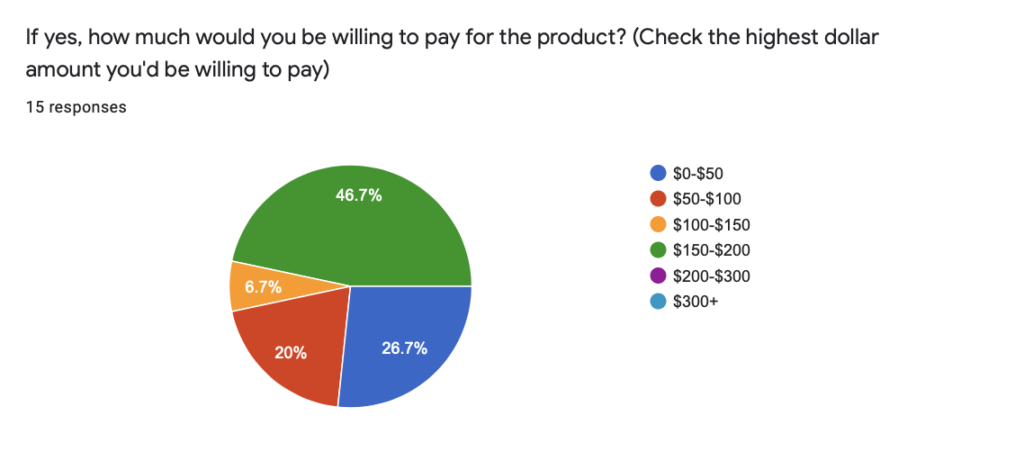Prefer a high-level recap of the conversation? Read it here.
Q&A with Marriott International’s Christine Kettmer
Jesus Ramirez: With me today is Christine Kettmer, Senior Director of Global Enterprise Insight and Strategy at Marriott International. We’re going to be talking about the future of travel, but before we get to started, I did want to share some sad news. Many of you may have seen that Marriott’s president and CEO Arne Sorenson passed away. I wanted to acknowledge this unfortunate news and also send a heartfelt condolence to his family, his friends, and everyone at Marriott. Christine, is there anything you would like to add?
Christine Kettmer: Thank you so much, Jesus. Thank you for those sentiments and to everybody who’s reached out so far. It definitely is a very hard day, and a tremendous loss for the hospitality community and the Marriott extended family. Arne was just an amazing person. He was incredibly approachable, humble and brilliant and just such a visionary. He transformed our company. He was the first non-Marriott family member to serve as CEO and only the third CEO in the company’s history. We’ve been around for 94 years. Mr. Marriott said it really well: [Arne] was an exceptional executive, but [even more], an exceptional human being. So, [it is a] huge loss. Thank you for those sentiments. We’ll definitely be continuing to pray and think about him and his family. Our thoughts and prayers go out to the entire community.
JR: Thank you, Christine. Perhaps a good way to start our conversation is for you to tell us a little bit about yourself and your professional journey.
CK: Sure, I’m happy to do that. Thank you for the opportunity to be here. As you said, I’m the Senior Director for Global Enterprise Insights and Strategy, which is a function at Marriott International. I’ve been at the company for about seven years now in different roles… I’ve always been interested in marketing and communications and consumer insights and behavior, so started off working at a nonprofit at the NGO in Geneva, Switzerland. right out of college. I moved there and did [marketing and communications] work for a human rights organization. Then I pivoted to working on different campaigns for health and education and safety accounts here in Washington, DC… I used to tell people all the time that I worked on social marketing. I [could] teach people to brush their teeth, but I [didn’t] know how to sell toothpaste.
I really wanted to get back into the product side and the innovation [of business], that allowed me to pivot and go back full-time to business school. After business school, I [took] the traditional CBT route. I worked at Johnson & Johnson for three years on [their] baby brands [and] a couple of the beauty brands, and really learned how to run a PNL [and] be responsible for new product development. But I always just loved the “Why?” – [why] people purchased different brands or were attracted to different products. So, that’s really what led me into the consumer behavior space. As I said, I’ve been at Marriott for about seven years now in a couple of different roles. I went back to brand management for a little while and worked on the GW global brand team, and the JW Marriott global brand team for a couple of years, but I’ve been in different roles related to insights, strategy, customer experience, [always focused on] helping to represent [the] voice of the customer? What is it that’s important to [them and] where [can] we take their travel experiences… in the future?
JR: That’s awesome, thank you for sharing that. It’s a great journey. Maybe you could tell us a little bit about your teams, responsibility and what you do at Marriott [now]?
CK: Sure. Ours is a relatively new team, but it’s a great group that basically thinks about where we [are] heading as a company. What are we seeing in the trends and [what are the associated] implications for our business? How do we create strategic opportunities for our leaders and for our brands for the different business lines that we’re involved in? [We focus on] leaning into the perspective of what’s happening in the marketplace, what we’re seeing in the data, and what our guests are telling us, and [try to represent] that point of view. So, we’re thinking a lot about all the things and information that are happening right now, as a result of our business, but also, [identifying] where opportunities [are]. Where are those bright spots are? Where are the things that we can lean into and where can we go in the future, so that we’re meeting the guests where they are, but we’re also [driving] loyalty and commitment to our brands [for] the long-term?
JR: The travel and hospitality industry [was] hit fairly hard [this past year] but there have been some bright spots. You and I have spoken [previously about] some really interesting [themes]… What have been the bright spots for you and your organization during this time?
CK: People are definitely looking forward to booking their next trip. And if anything, they’re going to be more appreciative and [more] cognizant of what that will mean when they’re first on that airplane ride, or they’re checking into that hotel, or even if they’re getting a rental service [or] mode of transportation. So, I think one of the bright spots is – even though [it took] a little longer than obviously anybody would have hoped or anticipated – there is that excitement [and] enthusiasm, that when people want to plan a trip, they’re willing to do so. They’re looking for that next vacation, or even [feeling] excited about conferences or in-person networking opportunities to reconnect with colleagues.
"I am optimistic that travel will come back, and I think it's going to come back with a vengeance. I use the term 'revenge travel'. People are willing and excited, but they're also ready. And so again, if it's taken a little bit longer than the anticipated, I think people will be certainly more appreciative of it."
So, the enthusiasm, that’s something that really strikes me as a blind spot. I would also say, in general, there are lots of opportunities for our guests, when they have a good day, they’re more inclined to tell other people about it. So, we’re seeing some bright spots in social media and in our Guest Voice, which is our platform. We look at all of the survey responses that come in, once they’ve had a really good experience… [We’ve found that they’re] more inclined to book something, and either stay longer or post about it [and] share with others. It really is about restoring that confidence. Making sure that we’re doing all the things we’ve always done – the standards are incredibly high – but reinforcing cleanliness and safety protocols, and really making sure that we’re still enabling that high-touch high-tech service combination. So, leaning into our associates: Making sure that they’re feeling trained to demonstrate the [right] protocols, but also like deliver or welcome [guests] with a smile, even if [when] wearing a mask. [We’re] really trying to make sure that the experience is still there and that we’re ready to welcome our guests, whenever that time is right for them.
JR: One of the things that I found really interesting in our last conversation was that Marriott was one of the first to mandate mask requirements. To me, this is an indicator of leading through values, and really placing an importance on not just guest safety – obviously that’s important as we go forward – but also your associate and employee’s safety.
CK: Completely. Yes. The founding principle of the company is all about putting people first. So, we always have said that if you take care of your associates, they’ll take care of the guests, and the guests will come back. That’s been the underlying business model since the beginning. So, it [seemed] really groundbreaking last summer, [but] we look back on it now, and it’s almost a no brainer. Of course, [employees] would wear [masks]…. But at the time, when it was announced in July, it was really forward-thinking for the industry. And it was in the spirit of “We’re all in this together, but we’re trying to protect each other and do [whatever we can to] allow our guests to feel more comfortable, but also reinforce the fact that we [prioritize] health and safety so much…” We really want to make sure our guests feel comfortable. However, that might look, we’re doing everything on our part to make it happen.
JR: That’s fantastic. There are signals that indicate there’s pent-up travel demand. There’s an uptick in consumer confidence as it relates to travel. So, how are you anticipating and preparing for this eventual resurgence of travel?
CK: As I mentioned, our brand standards and our maintenance and safety protocols are certainly paramount. We want to make sure that we have those physical cues, that they’re being demonstrated on a regular basis, and that our guests are prepared. They know expectations going in – from the time that they’re planning and booking a trip, to the pre-arrival communications, [and] the on-property experience. And then, hopefully [providing] something that really feels positive and resonates with them, so that when they’re wanting to rebook, or that they’re sharing with others, they have a good story to tell. [We hope that sentiment will make them more] inclined to come back again in the future. I think, also, just in general, it’s about like flawless execution of the basics, right? Meeting our guests where they are.
So, you know, making accommodations [and doing] all the things that we had in place before, but now [elevating them]. So, [for example, updating] our technology with keyless entry, or [allowing guests to] get keys downloaded [through] the app; [messaging] through the app for housekeeping requests [or ordering] in-room dining or room service. Just making sure that we’re still providing that high-tech high-touch service model, and that our guests [feel like] our associates… care: They want to make sure that they’re comfortable with their stay, and that they feel like they’re being taken care of. When guests come, [we don’t want them to] have to really think about much. It’s all sort of available for them… And hopefully, again, having a great experience.
Also read: What’s In Store For the Future of Travel?
"The little thoughtful gesture, and small touches accumulate. They really go a long way. I think that gets remembered, and then guests sort of expect that elevated level of service.
JR: I want to double down on something that you had mentioned, which I found really interesting. There’s this talk of contactless and, obviously, that’s important given some of the safety concerns, but that doesn’t necessarily mean that it’s not personal and the experience and those moments of truth and those touch points are still opportunities to create personalization. I think that’s something that you guys have really focused on.
CK: Absolutely. Yeah. I mean, a lot of our associates are tremendous detectives. They’re really good at getting information without people operating too much. They do a great job of just making sure that the little elements and experiences and touch points, they feel really personalized. But it’s not something like, “Oh, we just happened to have extra of this…,” or “This is something I’m going to do to be nice.” It’s actually through an authentic and genuine kind of connection. And so, I think a lot of our properties… I can think of examples when I was working on the JW Marriott brand. I hear stories like it’s almost expected, if you check in, you mention [you’re there for an] anniversary or birthday – that you’re celebratin –if somebody happens to find that out ahead of time, and there’s a special amenity or gift, [like it’s recognized by the on-site] restaurant or something. It’s just a nice touch. And I think, you know, a lot of our hotels do a good way of making the guests feel uniquely recognized and special, but also, in a way that it’s not burdensome. It’s just actually a true pleasure and [an] opportunity for our associates to shine and to do something that they feel is really unique, too.
JR: Yeah. It’s those little moments of delight that are really human in nature, and they don’t have to be big things. They can be small little things, and they make a big difference.
CK: Exactly… It sounds obvious, but sometimes, if you’re waiting for a car to pull up as you’re checking out of the hotel, [providing] cold towels available, or bottles of water if it’s a hot day. When people are arriving, [giving] them like a little cloth or something, so that they can wipe the airport [off of] them, or whatever it is. [The] little thoughtful gesture and small touches accumulate. They really go a long way. I think that gets remembered, and then [guests] sort of expect that elevated level of service. But it’s really foundational at the end of the day. It’s about getting those basics, right?
JR: That’s fantastic. I’m going to switch gears a little bit… Travel just isn’t about travel. It’s always had a larger meaning and, you know, it’s quite possible that the meaning of travel is going to change or has changed during this time. What are your thoughts on this?
CK: Yeah, it’s interesting… People are definitely planning still for that next big trip. [Maybe it’s] something that they wanted to take five [or] 10 years from now, but [now], it’s more immediate. So, once the timing again is right, they’re taking advantage of it. But I also think that people are going to be a little bit more intentional with their travel. They’re not necessarily [going to] try to go… Like if they go to Europe and do seven countries and seven days – [travel] might be a little bit slower, a little bit more focused and deliberate. And certainly, I think a little bit more introspective. People might just be more appreciative of the opportunity to travel. And we’ve seen this shift towards, what I would call: The intentional or the slow travel, where people pace themselves, again. Maybe they take a longer route – it’s a little bit more scenic – or, of course, [they’re] blending business and leisure travel… People are taking more extended time to have some time maybe for work, but also tacking on a few extra days to spend with family members or friends… Everybody is just excited to be with their loved ones… People are comfortable, but they’re kind of experiencing virtual meeting or Zoom fatigue. So, having the opportunity, nothing replaces in-person connections. We know that, whether it’s a chance to go visit extended family members or at our hotels [at] conferences and meetings [or] events: People miss being with other people, and you can’t ask them to replace that in-person connection. So, having the opportunity to really foster those moments, I think people [will] be more appreciative of them, in general…
JR: Inherently, we’re social creatures.
CK: Yeah, exactly.
JR: I heard somebody say a little while ago, I can’t remember where I read it, but it was something along the lines of: “Travel used to be for escape. And now, it’s more for connection.” That’s connection to others or connection to yourself, which [aligns with your idea of] introspection and slowing down and being more intentional.
CK: I think, in general, people are just more appreciative… We’re just going back to our roots and a little bit more appreciative of the gifts of the world around us and what we can give back, in turn.
JR: That’s fantastic. So, in your role in particular, you mentioned this at the top of the session… in your role, you’re really looking at insights and trying to have a pulse on your guests and travelers, in general. So, what are some of the things that you’ve seen? What are some of the new consumer trends or needs or behaviors either that you didn’t expect and were sort of a surprise [about], or things that you’re seeing that are thematic?
CK: In terms of behaviors, I touched on [this] briefly earlier, about “B-leisure:” The blending of different trip purposes. Whereas before, people might’ve tacked on an extra day or two, now, because of the extended breaks that people are taking, or even temporary relocations – you’ve heard the stories of some of these different countries that are offering temporary work visas or opportunities for people to scoop up a house for a dollar in different markets and stuff – I think people are really being a little bit more deliberate with their tips and trying to blend the experiences. So, then it’s that balance. And I think in general, just focusing on their personal and mental wellbeing has been tremendous. It’s been really important. So, I, I would say leaning into some of the more wellbeing-focused travel. That’s something that we’ve seen pick up quite a bit. People are thinking, “Okay, how can I incorporate physical exercise or mindfulness experiences and our hotels?”
"Focusing on their personal and mental wellbeing has been tremendous. It's been really important. So, I, I would say leaning into some of the more wellbeing-focused travel. That's something that we’ve seen pick up quite a bit."
I have to say, they’ve just done an amazing job pivoting and re-purposing different spaces. [For example], we have family yoga sessions. There are hotels where they reconverted old rooms into spots and sanctuaries… It’s really been interesting to [see] what guests are wanting and requesting, and how we’ve been able to accommodate… And then, I think also just in general, one thing that is so important for our guests is feeling very comfortable when they come to the properties through all elements of the journey. So, from the moment that they arrive, they have a good experience, to the times when they’re enjoying some of our food and beverage outlets… [it’s also important to] make sure that like we’re offering opportunities for work arounds. Some of our hotels, again, have done an amazing job when it comes to redesigning some of their guest rooms to be private dining spaces or [hosting] evening social events where we have like cocktail cards or places where people can choose to have a happy hour kind of experience…
And then just also being able to [provide] partnership [experiences in] local areas if they want to leave the hotel. We have this great program called Eat Around Town. Guests can go, earn points through local establishments and partnerships and restaurants. I don’t know if people realize this: We have over 7,000 hotels globally. Multiply that times the communities in which those properties are located, and you’ve got lots of chances to really enjoy your points, [and do stuff] off property, as well.
JR: Let’s talk about the whole notion of transforming spaces. I think that’s a really interesting thing that we’ve seen, [and] not just in the travel industry. It’s been a common theme. Restaurants, as an example, have had to rethink their floor plans [and] their entire delivery system. It’s also created an opportunity for different businesses [and] industries to really rethink their spaces and things that are not being used. How do you repurpose them to really serve your customer? I thought that was really interesting… I’d love to learn a little bit more about your partnerships and what your perspective is on how partnerships will evolve going forward, given that there’s [not] a single entity that owns the full end to end customer experience, but there’s a lot of alliances and partnerships.
CK: We have so many different types of partnerships. I think some of the ones that really resonate with people right now are the ones where, again, you’re drawing meaningful connections or experiences, too, or that it’s relevant or applicable to what they’re doing every day. I think about last summer. We launched a program where you could earn a grade. It was, like, six times the amount of points for groceries, and again, it was through our credit card program. It was meeting people, our guests, where they are and what they’re using their different points on, or their credit card dollars with, at this point. Our Marriott signature brand [also] partnered with Ted. I think some of the talks that are out there are [focused around] those meaningful moments or connections or experiences – just taking the chance for people to feel like travel really enriches the soul. And when they’re traveling, people feel a little bit more open to new experiences and to opportunities. And so, if it’s that intellectual stimulation or learning [opportunity], I think that’s a great way for people to feel like, “OK, I can be more balanced and full of life and present in the moment.” And I think that some of that comes through in those little moments or those different pockets of inspiration that we try to activate through partnerships.
JR: I think that hits on a couple of things. It hits on this notion that rethinking travel – the partnerships that you’re forging are – different than they were even several years ago. And it’s more about learning in these really meaningful and intimate experiences. I think that’s really interesting.
CK: Definitely. I think the balance is now a little different… You touched on things like our spaces and the redesign, you can’t necessarily always do it in community or with others. So, thinking through, “How do you benefit individually, but then share that out collectively?” How does that balance occur, where you’re able to do something for yourself, but you also can share it with others, even if you have to be a little bit more socially distant or physically not in the same space? There’s still a way to feel that enriching experience.
"How does that balance occur, where you're able to do something for yourself, but you also can share it with others, even if you have to be a little bit more socially distant or physically not in the same space?"
JR: What are you doing or what is Marriott doing to really position itself to be able to offer those types of experiences or be a part of that experience?
CK: There are a lot of different things that our hotels have done. We have a partnership where we do tours and activities. There are off property chances where people can take advantage of different versions or experiences. Some of our properties have farms where you can go and pick your own food, almost [be a] farmer for the day, which is pretty cool. [Also], when [people] go to a hotel, they don’t want to stay at [the] hotel the whole time, so having the chance to experience some of those off-property locations. I can think of one of our hotels in Thailand, [it has] a great partnership with a local aquarium. They do an activation where they actually bring kids who are staying at the hotel to the site and they teach them about all the different animals that are there.
[Also], I think [it’s] the Ritz Carlton down in Amelia Island. they have an onsite Marine Biology, which is pretty cool for families. It’s [about] trying to bring some of the elements of what’s around them, [and weaving it into] the experience at the hotel, or even off-[property], if it’s a partnership or local activation. I think, in general, people just want to [have] tangible, sensorial experiences, really getting back to [their] roots and back into nature… I think people are feeling a little bit more appreciative and intentional with that nature perspective.
JR: Yeah, that’s great. You mentioned being a farmer for the day. I went to this [goat] farm in Pescadero a couple of years ago [where you could] pet the [animals]. That’d be a great experience through one of your hotels.
CK: Totally. I mean, I remember a couple of years ago, goat yoga was all the rage, right? One of my colleagues said something the other day that. There is a local alpaca farm here in DC, and you can bring people there. It’s just amazing that, connection to animals [and] sense of nature. It’s just really important to people. So, that’s fantastic.
JR: One of the things that I’d love to spend a little bit of time on is this notion of understanding your traveler and understanding your guest and understanding customer sentiment. [I’m] curious to hear your thoughts on what can brands do to get closer to their customer, to really understand what are their needs [are], and what role does data have in this?
CK: I think a lot of it is, just like I was saying earlier, going back to the basics. Really listening to your customers, understanding what’s important to the guests and paying attention. And I think this comes through. We have great resources that we can utilize from social media where we’re getting that real-time feedback as people are staying in our hotels, but also just looking at the data like the post-day surveys, and looking at what worked well, [and where] could be opportunities for improvement? We always love it when our guests are recognizing special associates, or they share an experience that they’ve had. [It’s about] really paying attention to what’s important and making sure that we’re doing all the right things. So, it’s a combination of… signage in the right place or the high-tech service that’s available, or just ensuring that we’re adapting and adapting, [again].
"I think a lot of it is going back to the basics. Really listening to your customers, understanding what's important to the guests, and paying attention."
[For example], I think all of our restaurants pivoted really quickly to offer QR codes, instead of having tactile menus or having different technologies… The app was able to [accept] housekeeping requests on demand – people could [message] through the app and the interface [to] request services. A lot of it is just recognizing, what are the patterns or the trends that are emerging and the common themes? And therefore, ensuring that we’re doing it right. [Are we] setting the expectations so that our guests… [know what they] can expect to have happen? … It’s really just about getting the basics right. And making sure that we’re listening to them and meeting them where they’re at and delivering [with] flawless execution wherever we can.
JR: You and I had a conversation earlier this week, and you were mentioning that you’re a founding board member for the women leading travel and hospitality group I found [that] really interesting and fascinating. I’m wondering if you might be able to share a little bit more there.
CK: Sure. Yeah. I’m happy to talk about it. And thank you for the opportunity. So, Women Leading Travel & Hospitality is a relatively recent group. We just launched in January. So, if people are looking for it, they can find more information on LinkedIn. We have some social channels through Instagram, [and] they do a newsletter that comes out once a week on Tuesday mornings. And it’s really a network of different women throughout the different hospitality industry. So, of course, [there is] me from the hotel space; there are a couple other women leaders who are from other competitor companies, or peer companies, but then it’s also about representation from airlines, from transportation services. We have some relative startups, like where people are working on things that are related to RVs and alternative accommodation. There’s a woman who is running the innovation center at DFW at the Dallas Fort worth airport.
So, I mean, it’s the whole gamut of different experiences, but one thing that I’ve really appreciated… We have peer groups where we talk about all sorts of different topics. What we’re seeing in our respective industries and sectors, but then also like, what are some of the challenges that we’re all facing in this remote environment? Or how are we going to lead performance evaluations this year, or even just like, you know, what does it mean to be a really effective leader? And so, it’s a whole gambit of different topics, but I think that there’s a tremendous amount of respect and appreciation for people’s different viewpoints and their input. And it’s just a great way to network with other people. So, I would really encourage people to be looking at their website. We have an event actually next Thursday, which will be February 25th. [Anyone] can participate in that, but it’s a relatively nominal membership entry point for people to join. And it’s just a great network and a way for people to really [come] together from different industries and different perspectives.
JR: Yeah. I love that. I love the fact that there’s this spirit of partnership and it’s not competitive. And, you know, I think that was a topic that was hit on in the previous session as well, that I think this time has really shown that the industry is stronger as a whole. When everybody comes together and partners, it’s much more operative…
CK: Yeah. I’ve been very impressed with a lot of the different groups. I know, in particular, the U.S. travel Association has been really pivoting to get all of the different sectors involved in terms of planning a vacation day or thinking about like that next trip… IT goes through all the different stages [of] that customer journey experience.
JR: I have a few more questions and then I think we should probably pivot over to the question in the Q&A… What are you optimistic about? What are you most excited about looking forward?
CK: I am optimistic that travel will come back, and I think it’s going to come back with a vengeance. I use the term “revenge travel”. People are willing and excited, but they’re [also] ready. And so again, if it’s taken a little bit longer than the anticipated, I think people will be certainly more appreciative of it. I think in general, I’m optimistic that people are going to be a little bit nicer, a little bit more patient… We know that travel is such a gift, and that people won’t take it for granted… And so, I’m optimistic that every time that people travel going forward, you’re just going to realize what a tremendous gift it is and what an experience it is to be able to do it, whether it’s personally, or professionally, or some combination.
JR: One of the things that we’ve seen probably over the last year is also the approach that companies have had to take days off. There’s been a lot more flexibility and acknowledgement that it’s an important thing – that people’s wellbeing is important. There’s going to be challenges, as we go forward. And I think I’m optimistic and hopeful that companies will value that going forward or will continue to value that.
CK: I agree. I definitely think so. And I’ve seen, even among our leadership, people taking advantage of opportunities to have those blended experiences… But that balance is really critical.
JR: Yeah. So I know we’re wrapping up. I can I ask a few of the Q and A’s. One of them is: How has your loyalty strategy been impacted over the last six months?
KC: Sure. So we’ve made a couple of different changes to our loyalty program. And if people are curious to know a little bit more, they can certainly go online and see about some of the requirements as it relates to status and tiers and weeknights and all that. But I mean, as it is today, of course we want people to love our brands, to be those brand ambassadors, to have great experiences. [We] focused on what I was talking a little bit earlier, in terms of [providing] opportunity to earn points [at] different ancillary revenue sources. But also, we want to give our guests the chance to burn points, to use their points, [and] actually take advantage of those redemption days. To really plan that next big trip [and to] be excited for it. So, it’s just more of a shift in terms of where the spending is. In general, I think our five-point program has been consistently recognized as a really amazing program with wonderful perks and privileges, and members just love it. So, we want to keep that train going, I would say.
JR: One last question. What is the pivot at Marriott that you’re most proud of in the last year?
KC: The last year? I would say the authenticity that people are showing. I think that people are really just so genuine in terms of their experiences now. It’s a little bit vulnerable, but people have shown their home lives; It’s intersecting with their professional lives. But I think a great example of going back to what we were kind of talking about at the beginning… Displaying empathy from the get-go and really acknowledging and recognizing that people are going through all of those stirred up emotions: The ups, the downs, the peaks, the valleys. And so, just having the courage and conviction for people to say, “I can’t be on-call at six o’clock at night because that’s the time that I put my kids down for a bath,” or at 7:00 AM… It’s just, again, “That’s not going to work for me because that’s the time that my husband and I read the newspaper together and have coffee.” The little things like that, it’s showing everyone’s authenticity, but also the expectations that people will continue to give their all and that everybody is working together and we’re not going to let go of short and long-term plans, but we want to be supporting each other. [Whatever] that looks like.
JR: Yeah, yeah, we’ve really sort of brought down the facade that everything is flawless. It’s not.
CK: It’s real.

